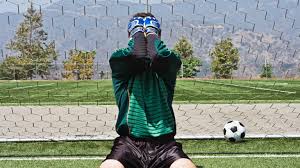In the arena of elite sports, talent and training are only part of the equation. What often separates the great from the greatest is not just what happens in the body but what happens in the mind. Fear of failure is a silent opponent that every athlete, no matter how decorated, must learn to face. And while some crumble under its weight, others rise. So what’s their secret?
Let’s explore the powerful mental techniques top athletes use to conquer fear and perform under pressure.
1. Reframing Failure as Feedback
One of the most powerful mindset shifts elite athletes use is redefining failure not as defeat, but as data. Instead of viewing a missed shot or a lost match as a personal flaw, they see it as useful feedback a stepping stone toward improvement.
Example: Tennis legend Serena Williams often talks about how each loss taught her something new, turning setbacks into stepping stones for future victories.
2. Visualization and Mental Rehearsal
Top athletes mentally rehearse success long before it happens. They vividly picture themselves executing the perfect play, sinking the winning shot, or nailing a flawless routine. This technique conditions the brain to associate high-pressure moments with confidence and calm.
Why it works: The brain can’t always distinguish between a real and vividly imagined event. Mental practice activates the same neural pathways as physical execution making confidence feel familiar.
3. Staying in the Moment (Mindfulness)
Fear of failure usually comes from future thinking “What if I mess up?” “What if I let everyone down?” Athletes combat this by grounding themselves in the present moment.
Techniques like breathwork, body scanning, or repeating mantras help athletes stay connected to the now. When focus is locked into the moment, fear begins to fade.
Example: Many Olympians and NFL stars now work with mindfulness coaches to sharpen their present-moment awareness a skill proven to reduce anxiety and boost performance.
4. Anchoring Confidence with Routines
Pre-performance routines from rituals to specific warm-ups act as psychological “anchors” that prime the mind for success. These routines create familiarity in unfamiliar environments and give athletes a sense of control.
Example: Cristiano Ronaldo always performs the same series of movements before a free kick it’s not just habit, it’s a way to lock into a confident mental state.
5. Failing on Purpose in Training
Sounds crazy, right? But many high-level coaches build controlled failure into training. Why? So athletes get used to the feeling, learn to bounce back, and remove its power.
Example: NBA players might practice free throws after a tough workout, when they’re tired and prone to missing. It’s not about perfection it’s about learning to cope with pressure.
6. Developing an Identity Beyond the Sport
Athletes who tie their entire identity to performance often feel paralyzed by fear of failure. Those who see themselves as more than “just an athlete” tend to be more resilient, balanced, and fearless.
Mindset Shift: “I am a person who plays basketball” instead of “I am a basketball player.” That subtle change protects self-worth even when things go wrong.
7. Controlled Self-Talk
What an athlete says to themselves before and during competition can make or break their mindset. Champions are deliberate with their internal dialogue, replacing doubt with affirmation.
Examples:
- “I’ve done this a thousand times.”
- “I’m prepared.”
- “One play at a time.”
These short phrases keep the mind aligned with performance — not panic.
Final Thought: Bravery Is a Skill
Fear of failure isn’t something athletes “outgrow.” It’s a companion that travels with them — from rookie seasons to championship finals. The difference is, the best learn how to dance with fear instead of running from it.
Mental strength, just like physical strength, can be trained. And for those who master the mind, there are no limits.

